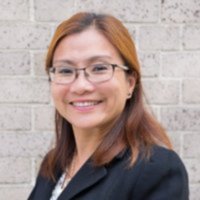
Shandra (Narrative 2)
In 2015, the most reported venues/industries for sex trafficking included commercial-front brothels, hotel/motel-based trafficking, online advertisements with unknown locations, residential brothels, and street-based sex trafficking. Shandra was lured to the United States with the promise of legal work in a hotel, but when she arrived she was imprisoned for sexual exploitation. She escaped and worked with the police to prosecute the trafficker. She is now an advocate for slavery survivors. Here she argues that stronger regulation of foreign recruiters is needed to prevent situations of exploitation and enslavement.
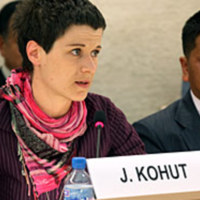
Jana
Bosnian victims are subjected to sex trafficking and forced labor in construction and other sectors in countries across Europe including Croatia, France, Serbia, Slovenia, and Austria. Corruption creates an environment enabling some trafficking crimes. Thirty-year old Jana Kohut from Bosnia told the Human Rights Council how she was trafficked and sexually exploited for four months in neighbouring Slovenia. Jana was abducted and forced to work as a prostitute for four months before she managed to escape. In her testimony, she calls for the creation of safe places and support for victims and survivors of trafficking.
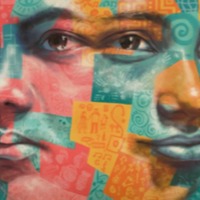
Idora
The UK National Crime Agency estimates 3,309 potential victims of human trafficking came into contact with the State or an NGO in 2014. The latest government statistics derived from the UK National Referral Mechanism in 2014 reveal 2,340 potential victims of trafficking from 96 countries of origin, of whom 61 percent were female and 29 percent were children. Of those identified through the NRM, the majority were adults classified as victims of sexual exploitation followed by adults exploited in the domestic service sector and other types of labour exploitation. The largest proportion of victims was from Albania, followed by Nigeria, Vietnam, Romania and Slovakia. Idora was enslaved in sex work after being promised lucrative cleaning work in the UK to help her save for a university education. Her story highlights that those who escape slavery may yet feel forced to return because of threats made against their lives, or those of their family members.
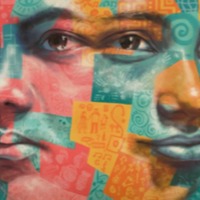
Ying B.
Ying was forced into prostitution after she was trafficked to France, and then to the UK. She was able to escape and was helped by Trafficking Awareness Raising Alliance (TARA), a support service in Scotland for trafficking survivors. The majority of those trafficked to the UK have been identified victims of sexual exploitation, followed by adults exploited in the domestic service sector and other types of labour exploitation.
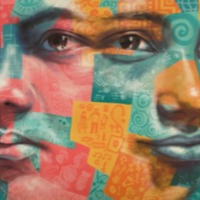
Shahnara
Born in Armenia, Shahnara was trafficked to the United Arab Emirates (UAE) where an estimated 10,000 women from sub-Saharan Africa, Eastern Europe, South and East Asia, Iraq, Iran, and Morocco are victims of sex trafficking. In addition, victims of child camel jockey trafficking still remain in the UAE: thousands of young boys have been trafficked from Pakistan, Bangladesh, Sudan, and Mauritania to work as camel jockeys, and though the UAE enacted a law banning the practice in July 2005, questions persist as to the effectiveness of the ban.
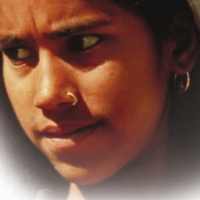
Sabina
Born in Bangladesh, Sabina was 12 years old when she was taken to a brothel in India. She was locked up and raped repeatedly until she managed to escape. Experts estimate millions of women and children are victims of sex trafficking in India. Traffickers use false promises of employment or arrange sham marriages in India or Gulf States and subject women and girls to sex trafficking. In addition to traditional red light districts, women and children increasingly endure sex trafficking in small hotels, vehicles, huts, and private residences. Traffickers increasingly use websites, mobile applications, and online money transfers to facilitate commercial sex. Children continue to be subjected to sex trafficking in religious pilgrimage centers and by foreign travelers in tourist destinations. Many women and girls, predominately from Nepal and Bangladesh, and from Europe, Central Asia, Africa, and Asia, including minority populations from Burma, are subjected to sex trafficking in India.
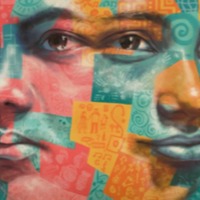
Rosa A.
In 1997, at the age of 14, Rosa was trafficked from Mexico into sex slavery in the US. She was transported into Texas, then to a trailer in Florida. Up to four young women worked in the same trailer, each of them having sex with up to 35 men a day, for 12 hours a day. They were constantly guarded, and beaten and raped by their bosses. After Rosa had been enslaved for several months, FBI agents, along with agents from the Immigration and Naturalization Service and local law offices, raided the brothel. Some of her captors were tried, others escaped and returned to Mexico. The US Department of Justice estimates that of the 14,500 and 17,500 foreign-born individuals trafficked into the US annually, some 80 percent are female, and 70 percent of these women end up as sex slaves. Feeder countries include Albania, the Philippines, Thailand, Mexico (many from the central region of Tlaxcala, a haven for modern-day slave traders), Nigeria, and Ukraine. Often the women are forced to work to pay off the debts imposed by their smugglers—debts ranging from $40,000 to $60,000 per person. They might perform 4000 acts of sexual intercourse each year to meet their quota, at $10 to $25 per act.
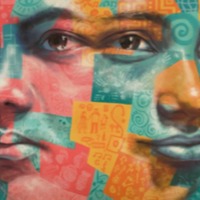
Ros
Ros is an Indonesian woman who was a domestic slave in Indonesia. She became enslaved after being made a false offer of work by a man who then imprisoned her and physically abused her for four years. Her attempts to run away failed more than once because of the complicity of officials and others in her enslavement. Her narrative suggests that the police deliberately hampered their own investigation and refused to take Ros’ situation seriously. The government has taken some positive steps towards protecting domestic workers. Following pressure from local and international organisations, including Walk Free, the Indonesian House of Representatives recommended the Domestic Workers Protection Bill for its list of priority legislation in 2016. Ros was enslaved without leaving Indonesia, but significant numbers of Indonesians are exploited in forced labor and debt bondage abroad in Asia and the Middle East, primarily in domestic service, factories, construction, and manufacturing, on Malaysian palm oil plantations, and on fishing vessels throughout the Indian and Pacific Oceans.
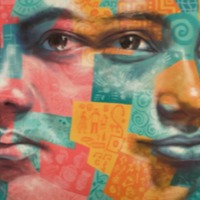
Olga
Olga was lured to Israel from Russia by a female acquaintance in 1998. After socialism was dismantled in the USSR in 1991, “transition countries”—nations that moved from socialism to capitalism—saw an explosion in the export of men, women and children as slaves. The US government believes that as many as 100,000 women are trafficked throughout the 15 former Soviet countries annually and sold into international prostitution. Russian women are trafficked to over 50 countries for commercial sexual exploitation, including countries in Central and Western Europe and the Middle East. In Israel, where Olga was trafficked into sex slavery, women are trafficked from Russia, Ukraine, Moldova, Uzbekistan, and Belarus. NGOs estimate that in 2005 between 1000 and 3000 women were trafficked into Israel for sexual servitude. Olga’s narrative recounts the experience of forced drug addition. This is one of several control mechanisms used by traffickers, along with intimidation and threats, violence, torture and rape, starvation, blackmail, debt bondage, and social isolation. Another control mechanism is identity control: victims of sex trafficking are often given new names and appearances to demonstrate that the traffickers not only own them but have created a new person for sexual exploitation. Olga’s narrative includes details of this particular control mechanism, describing the loss of her name. One final moment of identity loss then comes toward the end of her narrative, with her pretence of being Muslim in order to seek protection.
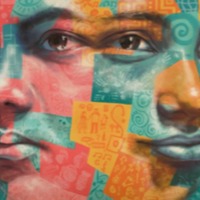
Nuch
Of the estimated 600,000 to 800,000 individuals trafficked across international borders each year, some 80 percent are women and girls. Nuch was one of the thousands of women trafficked annually out of Thailand for sexual exploitation. The major destinations include Japan, Malaysia, Bahrain, Australia, Singapore, and the US. Internal trafficking occurs within the country as well, usually from northern Thailand (where hill tribe women and girls are denied Thai citizenship). In Japan, where she was enslaved, women are trafficked from Thailand, the Philippines, Russia, and Eastern Europe, and on a smaller scale from Colombia, Brazil, Mexico, Burma, and Indonesia. Nuch left for Japan in March 1992 at the age of 27 and was held in Tokyo. She explains that she apparently owed money for the trip and had to work off her debt with clients. After three months in slavery, she was taken to a police station, detained for several months in solitary confinement, and transferred to an immigration detention center, where she was held until the Thai Embassy issued travel documents. She flew back to Thailand in March 1993. Her narrative describes the involvement of other women in the process of enslavement. Her experience was at the hands of a long series of women: a Thai woman who got “extra points” by betraying her, a female agent, a woman who was the “boss,” and the Taiwanese “mama” (brothel manager). The percentage of female traffickers is rising. Some have been trafficked themselves and then reappear as recruiters or pimps. Others are blackmailed by criminals. Female traffickers are often the most convincing at deceiving women and girls into accepting fake job offers and so beginning the journey into slavery.
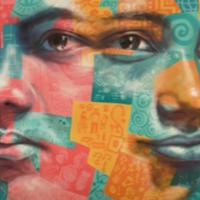
Milena
Milena was born in Moldova and trafficked into sex slavery in Russia, where men and women are also trafficked in from Central Asia and North Korea for forced labor and sexual exploitation. Moldova is a country origin for the trafficking of women and children into European sex slavery. Its economic conditions fuel this trafficking. In 2000, the country’s GDP was 40 percent of its level in 1990. Unemployment remains high, especially among women. People are forced to look outside of the country for work and pimps take advantage: some victims are kidnapped but more often they answer job advertisements promising work and then are forced into sex slavery. Most Moldovan trafficking victims are taken to the Balkan countries, though other destinations include Asia, Turkey, Western Europe and the Middle East.
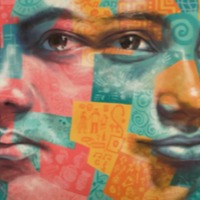
Mariana
Mariana was trafficked into Germany from Ukraine in 1997 at the age of 16. She had accepted the offer of a job: the push for women to leave Ukraine and other old Soviet areas is powerful. They account for up to 90 percent of the unemployed and are usually the first fired. Traffickers abduct an estimated 35,000 women from Ukraine each year. Almost 50 countries serve as destination points throughout Europe and eastward. Germany is one of the most popular destinations in Europe for women trafficked from Ukraine and Russia, though victims also come from Africa (mainly Nigeria) and Asia (mainly Thailand). In the aftermath of her enslavement, Mariana still felt trapped. She couldn’t return to her Ukrainian village because her neighbors believed she had been a “prostitute in Germany,” and pimps were looking for her. She moved to her uncle’s house, then to a friend’s house, seemingly on a perpetual journey from slavery to freedom.
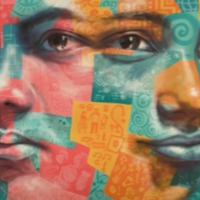
Maria B.
Born in Moldova, Maria was trafficked into domestic servitude in Ukraine in her late thirties, where her passport was withheld and she was beaten when she tried to leave. She eventually returned to Moldova without pay. Ukraine is a source, transit, and destination country for men, women, and children predominantly subjected to forced labor and to a lesser extent, to sex trafficking. A small number of foreign nationals, including those from Moldova, Russia, Vietnam, Uzbekistan, Pakistan, Cameroon, and Azerbaijan, are subjected to forced labor in Ukraine in a variety of sectors including construction, agriculture, manufacturing, domestic work, the lumber industry, nursing, and street begging; experts report the number of foreign victims in Ukraine has fallen dramatically since the beginning of hostilities in eastern Ukraine.
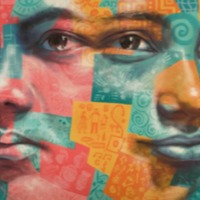
Maria A.
Born in Albania, "Maria" was trafficked into Italy, France, and the Netherlands. Closing the door on slavery seems almost impossible: “The shame for our parents and us is too large…what man will marry me?...It is difficult to smile.” Instead she reopens the door to her slave past and tries to help other trafficking victims—telling them that “they must make a new life” and inviting them to share their stories.
Many women are trafficked into richer Western European countries from the poorer Eastern countries, including Albania. The fall of communism in 1991 led to a rise in organized crime in Albania: in 2001 it was estimated 100,000 Albanian women and girls had been trafficked to Western European and other Balkan countries in the preceding ten years. More than 65 percent of Albanian sex-trafficking victims are minors at the time they are trafficked, and at least 50 percent of victims leave home under the false impression that they will be married or engaged to an Albanian or foreigner and live abroad. Another ten percent are kidnapped or forced into prostitution. The women and girls receive little or no pay for their work, and are commonly tortured if they do not comply.
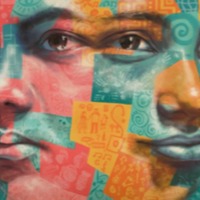
Kwame
Kwame was trafficked in 1998 and spent eight years with the same master as a slave at Lake Volta. He was rescued in 2006 by the Association of People for Practical Life Education (APPLE), a small nonprofit organization that works directly with the fishermen and children.
Along Ghana’s Lake Volta, slave children work long hours mending, setting and pulling nets, cleaning and smoking fish, and rowing the fishing boats. Boys as young as six are forced to dive to disentangle nets caught on tree stumps below this large man-made lake. The fishermen tie weights to the children to help them descend more quickly. When the water is too cold or the children get caught in the nets below it is not uncommon to find bodies washed up on the shores. If sick or injured, the children receive no care or treatment. While most of the enslaved children are boys, some girls are used for domestic work and to sell the fish in the market. Like other trafficked girls in Ghana, they are likely to be sexually abused as well.
Lake Volta is one of the world’s largest lakes and used to be a source of fish for both the national and export markets. But in the 1960s a dam slowed the vigorous flow of water and destroyed the fishing potential of nearby communities. Facing a newly impoverished environment, some fishermen began to enslave children rather than pay adult workers. With schooling hard to obtain and family incomes around the starvation level, parents will sometimes agree to let their children go in order to gain an “advance” on their child’s labor. Normally, the fishermen promise that more money will be paid to the parents over the next year. The money never comes.
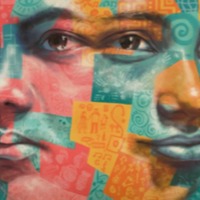
Jaroslava
Jaroslava is a Slovakian woman who travelled to the UK on the false promise of a job in a sandwich factory but instead enslaved in prostitution in London. She managed to escape to Glasgow and was put in touch with the Trafficking Awareness Raising Alliance (TARA), which has provided support to allow Jaroslava to establish a job and aspirations for the future. The majority of those trafficked to the UK have been identified victims of sexual exploitation, followed by adults exploited in the domestic service sector and other types of labour exploitation.
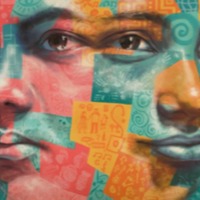
Intan
Intan is an Indonesian woman who was enslaved in Malaysia doing work that was hazardous to her health. Foreign workers constitute more than 20 percent of the Malaysian workforce and typically migrate voluntarily—often illegally—to Malaysia from Bangladesh, India, Nepal, Burma, Indonesia, the Philippines, and other Southeast Asian countries, often in pursuit of better economic opportunities. However, workers can find themselves imprisoned, exploited, and in debt bondage. The law allows many of the fees of migration, which are first paid by employers, to be deducted from workers’ wages, incentivizing employers to prevent workers from ending their employment before fees are recovered.
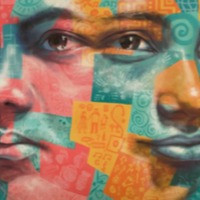
Inez
The US Department of Justice estimates that of the 14,500 and 17,500 foreign-born individuals trafficked into the US annually, some 80 percent are female, and 70 percent of these women end up as sex slaves. Feeder countries include Albania, the Philippines, Thailand, Mexico (many from the central region of Tlaxcala, a haven for modern-day slave traders), Nigeria, and Ukraine. Often the women are forced to work to pay off the debts imposed by their smugglers—debts ranging from $40,000 to $60,000 per person. They might perform 4000 acts of sexual intercourse each year to meet their quota, at $10 to $25 per act. In 1997, at the age of 18, Inez was trafficked from Mexico into sex slavery in the US. She was transported into Texas, then to a trailer in Florida. Up to four young women worked in the same trailer, each of them having sex with up to 35 men a day, for 12 hours a day. They were constantly guarded, and beaten and raped by their bosses. After she had been enslaved for several months, FBI agents, along with agents from the Immigration and Naturalization Service and local law offices, raided the brothel. Some of her captors were tried, others escaped and returned to Mexico. Inez now observes that she cannot “seem to get past the ordeal” of slavery. The turning-point from slavery to freedom has not occurred: Inez’s narrative is filled with phrases like “I will never forget,” “I try to act like a normal girl, but it is not always easy,” “I lack confidence and never feel secure.”
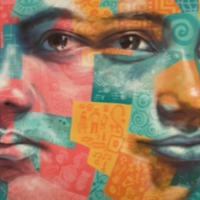
Iliona
Born in Armenia, Iliona was trafficked to the United Arab Emirates (UAE) where an estimated 10,000 women from sub-Saharan Africa, Eastern Europe, South and East Asia, Iraq, Iran, and Morocco are victims of sex trafficking. In addition, victims of child camel jockey trafficking still remain in the UAE: thousands of young boys have been trafficked from Pakistan, Bangladesh, Sudan, and Mauritania to work as camel jockeys, and though the UAE enacted a law banning the practice in July 2005, questions persist as to the effectiveness of the ban.
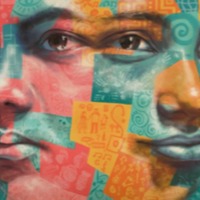
Aulia
Aulia is an Indonesian woman who was enslaved in Malaysia. Foreign workers constitute more than 20 percent of the Malaysian workforce and typically migrate voluntarily—often illegally—to Malaysia from Bangladesh, India, Nepal, Burma, Indonesia, the Philippines, and other Southeast Asian countries, often in pursuit of better economic opportunities. However, workers can find themselves imprisoned, exploited, and in debt bondage. The law allows many of the fees of migration, which are first paid by employers, to be deducted from workers’ wages, incentivizing employers to prevent workers from ending their employment before fees are recovered.